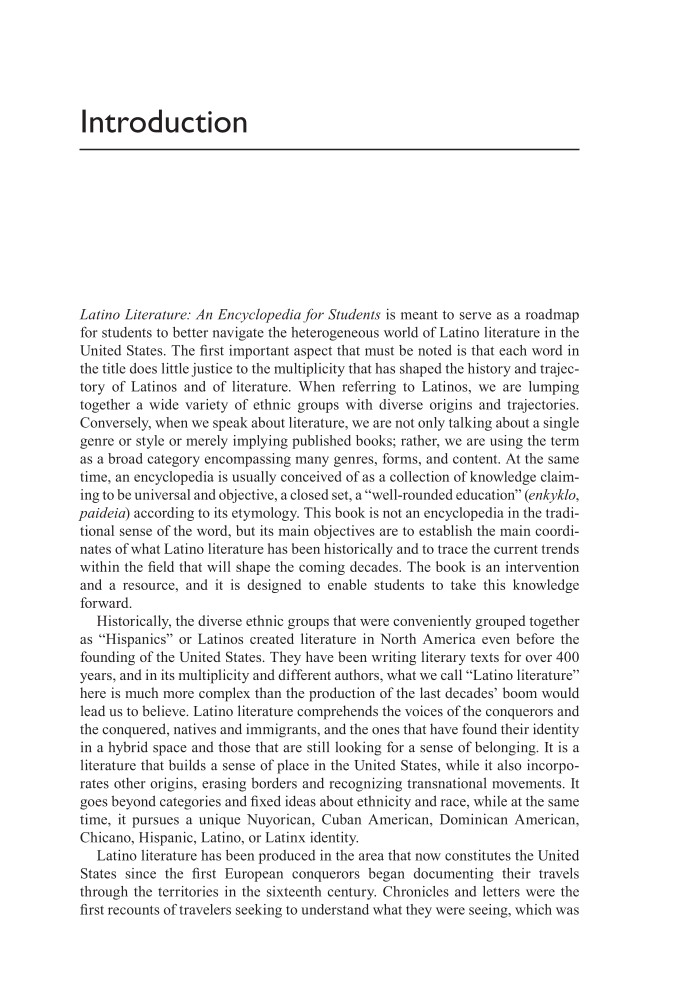Introduction Latino Literature: An Encyclopedia for Students is meant to serve as a roadmap for students to better navigate the heterogeneous world of Latino literature in the United States. The first important aspect that must be noted is that each word in the title does little justice to the multiplicity that has shaped the history and trajec- tory of Latinos and of literature. When referring to Latinos, we are lumping together a wide variety of ethnic groups with diverse origins and trajectories. Conversely, when we speak about literature, we are not only talking about a single genre or style or merely implying published books rather, we are using the term as a broad category encompassing many genres, forms, and content. At the same time, an encyclopedia is usually conceived of as a collection of knowledge claim- ing to be universal and objective, a closed set, a “well-rounded education” (enkyklo, paideia) according to its etymology. This book is not an encyclopedia in the tradi- tional sense of the word, but its main objectives are to establish the main coordi- nates of what Latino literature has been historically and to trace the current trends within the field that will shape the coming decades. The book is an intervention and a resource, and it is designed to enable students to take this knowledge forward. Historically, the diverse ethnic groups that were conveniently grouped together as “Hispanics” or Latinos created literature in North America even before the founding of the United States. They have been writing literary texts for over 400 years, and in its multiplicity and different authors, what we call “Latino literature” here is much more complex than the production of the last decades’ boom would lead us to believe. Latino literature comprehends the voices of the conquerors and the conquered, natives and immigrants, and the ones that have found their identity in a hybrid space and those that are still looking for a sense of belonging. It is a literature that builds a sense of place in the United States, while it also incorpo- rates other origins, erasing borders and recognizing transnational movements. It goes beyond categories and fixed ideas about ethnicity and race, while at the same time, it pursues a unique Nuyorican, Cuban American, Dominican American, Chicano, Hispanic, Latino, or Latinx identity. Latino literature has been produced in the area that now constitutes the United States since the first European conquerors began documenting their travels through the territories in the sixteenth century. Chronicles and letters were the first recounts of travelers seeking to understand what they were seeing, which was
Document Details My Account Print multiple pages
Print
You have printed 0 times in the last 24 hours.
Your print count will reset on at .
You may print 0 more time(s) before then.
You may print a maximum of 0 pages at a time.








































































































































































































































































































































